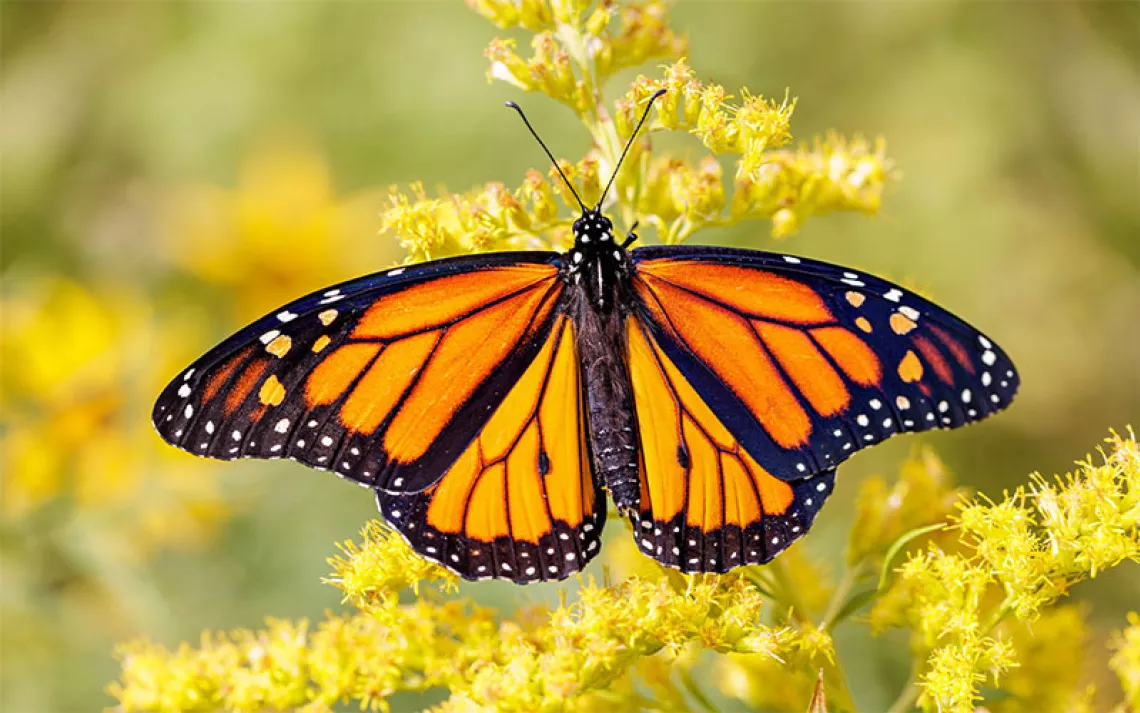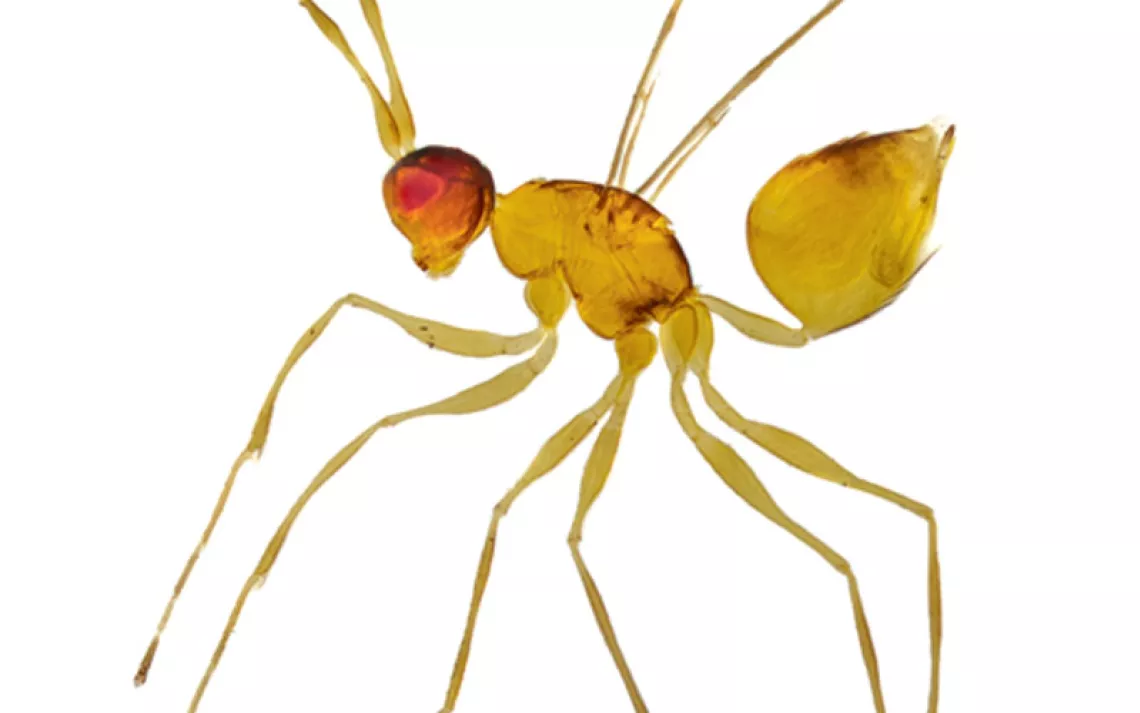Behind Dragonfly Research Is a Group of Eclectic Enthusiasts Holding the Field Together
For the Dragonfly Society of the Americas, community is as essential as science
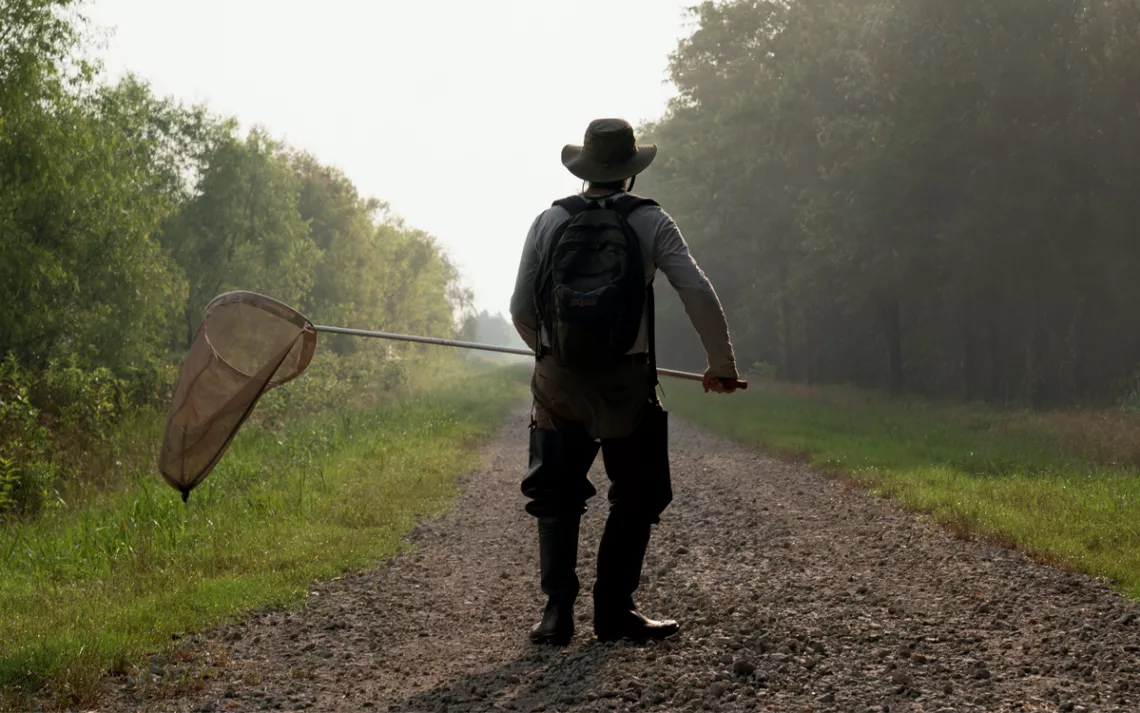
Jim Childress, a member of the Dragonfly Society of the Americas, searches for odonates at the Red Slough Wildlife Management Area in McCurtain County, Oklahoma. | Photo by Nick Oxford
It was terrible dragonfly-spotting weather in Idabel, Oklahoma. The June days were overcast and unusually cool, the evenings spiked by severe thunderstorms and tornadoes. The minute I arrived to join a trip with the Dragonfly Society of the Americas, Nancy McIntyre told me to get in her car. “We have two hours of sunlight,” she said. “Let’s go.”
As is their tradition, the eclectic group had gathered for a few days of recreational dragonfly spotting before the annual professional meeting, and they were determined to see as many species as possible. McIntyre, a professor of biological sciences at Texas Tech University, does ecological research on landscape fragmentation. Only sometimes does her research include dragonflies and damselflies, collectively referred to as odonates. Jim Johnson, the secretary of the society, rode along with us. “I’m more interested in seeing what the community is like all together. What are all the various species I can see?” he said.
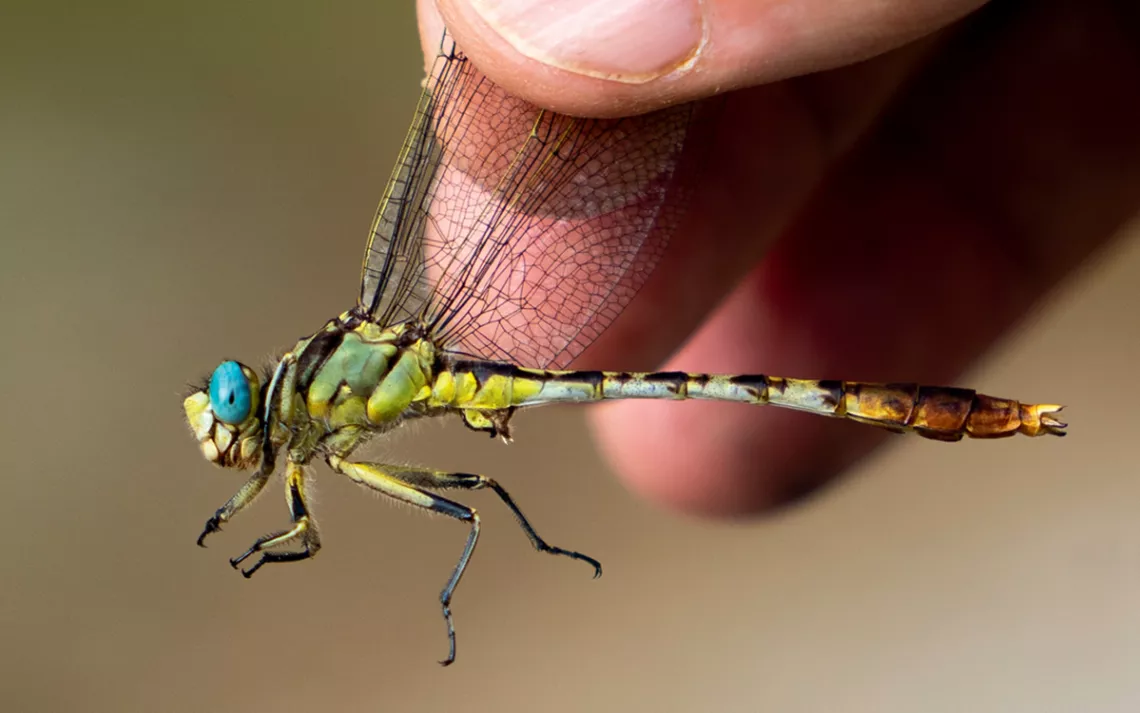
A stillwater clubtail dragonfly | Photo by Nick Oxford
Idabel is in McCurtain County, which is part of the Choctaw Nation of Oklahoma and gets about 50 inches of rain a year. The lush oak-pine forests of the Ouachita Mountains capture and absorb this precipitation in a network of streams, seeps, and creeks that provides habitat for 122 distinct odonate species—an unusually large number for such a small area. (There are at least 15 states that have fewer odonate species in their whole area.) At our first stop, the Little River National Wildlife Refuge, McIntyre netted a river cruiser, a dragonfly with two giant jewel-green eyes that met at the top of its head and a black-and-yellow-striped abdomen. With a mischievous smile, she asked whether I was brave enough to let her put it on my nose. “It probably won’t bite you,” she said, and though it was impossible to tell the degree to which she was messing with me, I consented. The dragonfly briefly tickled my skin before it glided back to its hunt above the river.
Odonates hunt the insects humans hate—mosquitoes and gnats, deerflies and wasps—and their 95 percent success rate makes them nature’s most lethal predators. Scientists have identified a group of 16 neurons connecting their brains to their thoraxes, which allow them to operate each of their four wings individually for nimble and graceful flight. They can fly backward and sideways, dip up and down with ease, hover in place, and reach speeds up to 30 miles per hour. With their compound eyes, odonates process 200 images per second—over three times more than humans do—which produces a slow-motion effect that allows them to hyperfocus on prey.

An eastern pondhawk dragonfly | Photo by Nick Oxford
The Dragonfly Society of the Americas meets in a different location each year to allow for odonate spotting in a variety of ecosystems. McIntyre described the members as kindred spirits with a passion for dragonflies. Odonates, like most invertebrates, are understudied, and academic entomology departments are becoming scarcer. Much of the current research is community science done by self-taught odonate enthusiasts with expert-level knowledge. The society awards small grants to support these collaborations.
Scientists can’t be sure whether or to what degree odonate populations are declining because there is no historical data for comparison. “Dragonflies aren’t disease vectors; they aren’t rare; they aren’t medically important; they aren’t agriculturally important,” McIntyre said. “So when it’s time to allocate limited research money, that kind of basic foundational science won’t get funded.”
Driving deeper into the Ouachitas, we met up with Melissa Sanchez-Herrera, a postdoctoral researcher at the University of Alabama, and Chris Beatty, a visiting scholar at Stanford University’s Program for Conservation Genomics, who were searching for a specific species: the gray petaltail, or Tachopteryx thoreyi. Sanchez-Herrera and Beatty are sequencing this dragonfly’s genome. There’s very little historical data on how petaltail species relate to one another and why they live where they do, so their genetic information could help fill in the gaps.
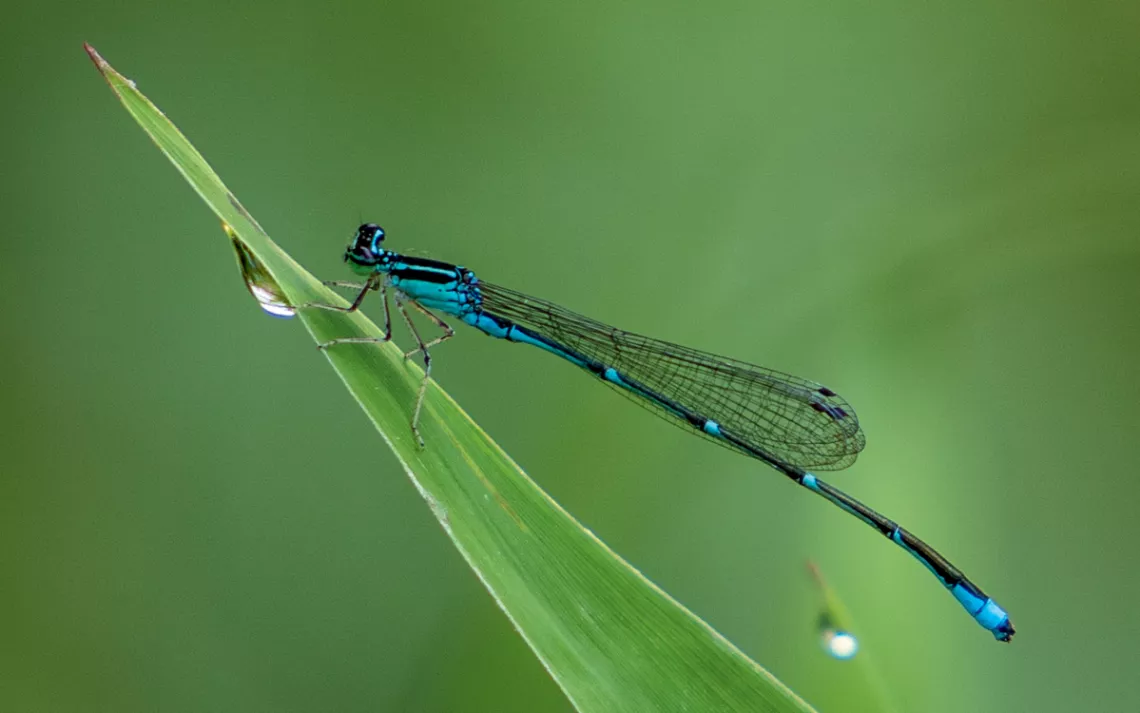
A stream bluet damselfly | Photo by Nick Oxford
Petaltails were already old species when dinosaurs went extinct, an unusually long and surprising persistence. By about 70 million years ago, continental drift and shifting ocean levels had caused two separate North American species to emerge—black petaltails, endemic to the Pacific Northwest, and the gray petaltails we were after that day. Southeastern Oklahoma is the western edge of their range, which extends to the Eastern Seaboard.
Searching for gray petaltails is difficult because they mimic the color of pine bark. Beatty instructed us to look for the vertical perching that is typical of these odonates, but they were also in motion, hunting and cruising past at eye level. The scientists carried large nets to capture them. There were plenty of missed swings; almost every scientist had a story of a dragonfly circling in plain sight, just barely out of reach of the net, taunting them. Sanchez-Herrera insisted that was all part of the fun. “You have to work hard to get them,” she said. “There’s no way to trick them into getting into a trap.”
The group, working together, caught three male gray petaltails before McIntyre snapped what may be the only photo of a female actively laying eggs, or ovipositing, under the moss spread across a rock. Though they would have liked a female sample, they would not collect one actively laying. Besides, it was time to drive to the Red Slough Wildlife Management Area for a chance to see emerald dragonflies swarm out of the marshes and into the trees at sunset. Almost immediately upon arrival, we were caught in a terrifying thunderstorm with tennis-ball-size hail. We were lucky to be inside our vehicles, but McIntyre’s windshield did not survive.
When the storm passed, a few intrepid dragonfly hunters took advantage of the remaining light to resume the search. We did not see the emerald dragonflies swarm. We did see prince baskettails, green darners, eastern pondhawks, and a teneral dragonfly, fragile and slow-moving, having only just emerged from its nymph phase. At dusk, when another storm darkened the sky, the odonates sought protection in the vegetation. We followed their lead, heading to safer quarters.
How to Spot Odonates
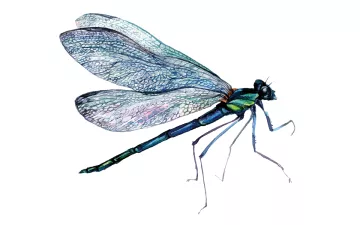
Find Water
Odonates live and breed near water. Search surrounding vegetation for horizontal or vertical perching, which is specific to different species and therefore a clue for identification. Some species coexist with fish; others prefer none.
Sleep In
Sunny days warmer than 65°F are ideal for spotting, and midmorning through evening is the best window. Most dragonfly enthusiasts start out as birders, used to rising predawn, and this later start
seems much appreciated.
Gear Up
Close-range binoculars and a net for catch-and-release hunting are helpful. Odonates can be held by the wing, gently and briefly, without harm. A field guide, such as Dragonflies Through Binoculars by Sidney W. Dunkle, can aid in identification.
Be Patient
Even experienced scientists struggle to net odonates, and they do not always capture the species they are hoping for. Try to keep an open mind.
 The Magazine of The Sierra Club
The Magazine of The Sierra Club
